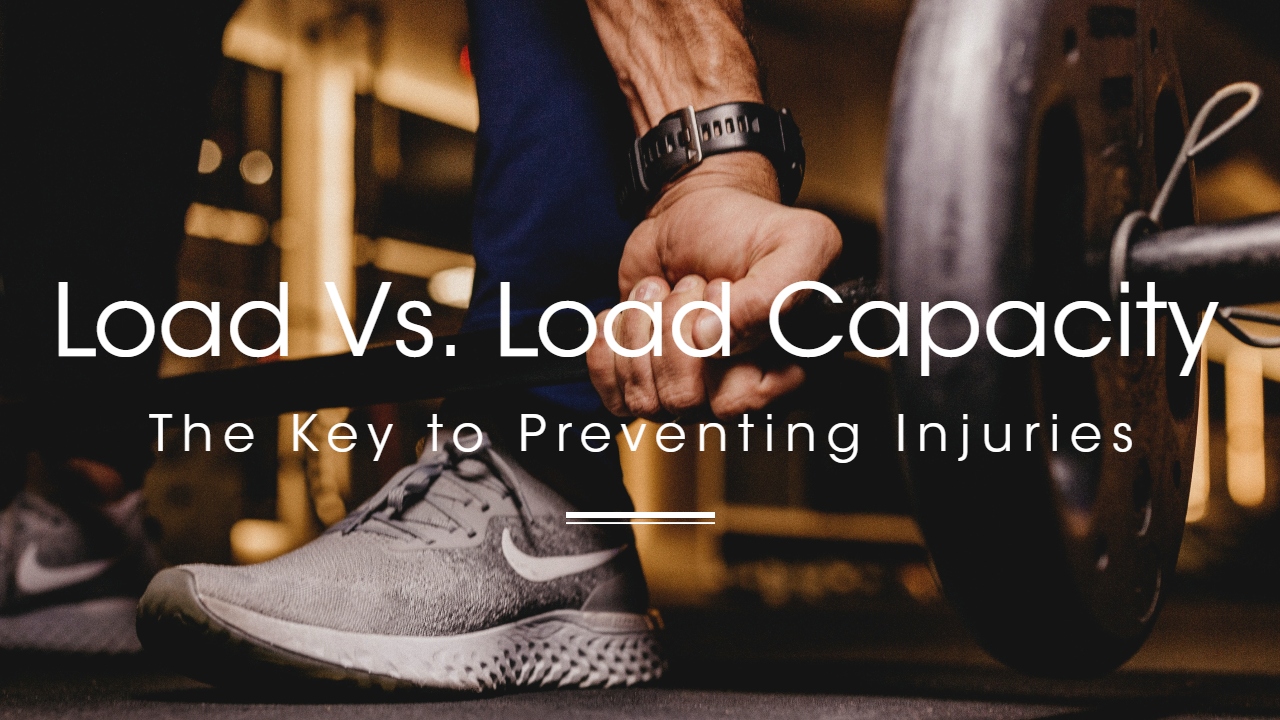Load Vs. Load Capacity – The Key to Preventing Injuries

Attention!! An essential concept for all weekend warriors, those beginning their exercise journey, or those starting new forms of exercise is called Load vs. Load Capacity. This concept helps explain nearly all injuries we see in our clinics. Having basic knowledge about this topic can help prevent injury. I’m looking at you long-distance runners, HIIT class lovers, and peloton riders!
Load:
Stress placed on musculoskeletal tissues (muscles, tendons, ligaments, bones, etc). Load is seen in the form of Training Volume (sets+reps+weight), and Frequency/Intensity/Time spent exercising. Examples of load include the weight of dumbbells used, mileage of running/cycling, frequency of exercise per week, amount of hopping done in HIIT class, time spent sitting in poor posture, and more.
Load Capacity:
All of our body’s musculoskeletal tissues (muscles, tendons, ligaments, bones, etc.) have a load capacity. A load capacity is how much stress a tissue can withstand before degeneration, snapping, or breaking.
Analogy:
A rubber band can handle a specific amount of stretch placed on it before it snaps. In this case, load = amount of stretch placed on a rubber band, load capacity = largest amount of stretch the rubber band can handle before snapping.
Load vs Load Capacity concept is becoming more relevant than ever during this pandemic. This is because many of us are working from home, and spending all day sitting. Spending all day sitting and living a sedentary lifestyle lowers the load capacity of our tissues. THEN, many of us are attempting to find new ways to workout from home, such as running or doing HIIT (high-intensity interval training) classes we find online. Abruptly starting these high-level activities greatly increases the load placed on our tissues. With sudden increases in load and work from home decreasing the load capacity of our tissues, we are snapping rubber bands everywhere and getting injured!
Summary:
Exercise is great and the best way we can keep ourselves healthy. However, don’t jump right into a high-level activity. You need to increase your load capacity first by slowly working your way up to it so you can stay pain-free!
Written By: Scott Robin, PT, DPT, Cert. DN